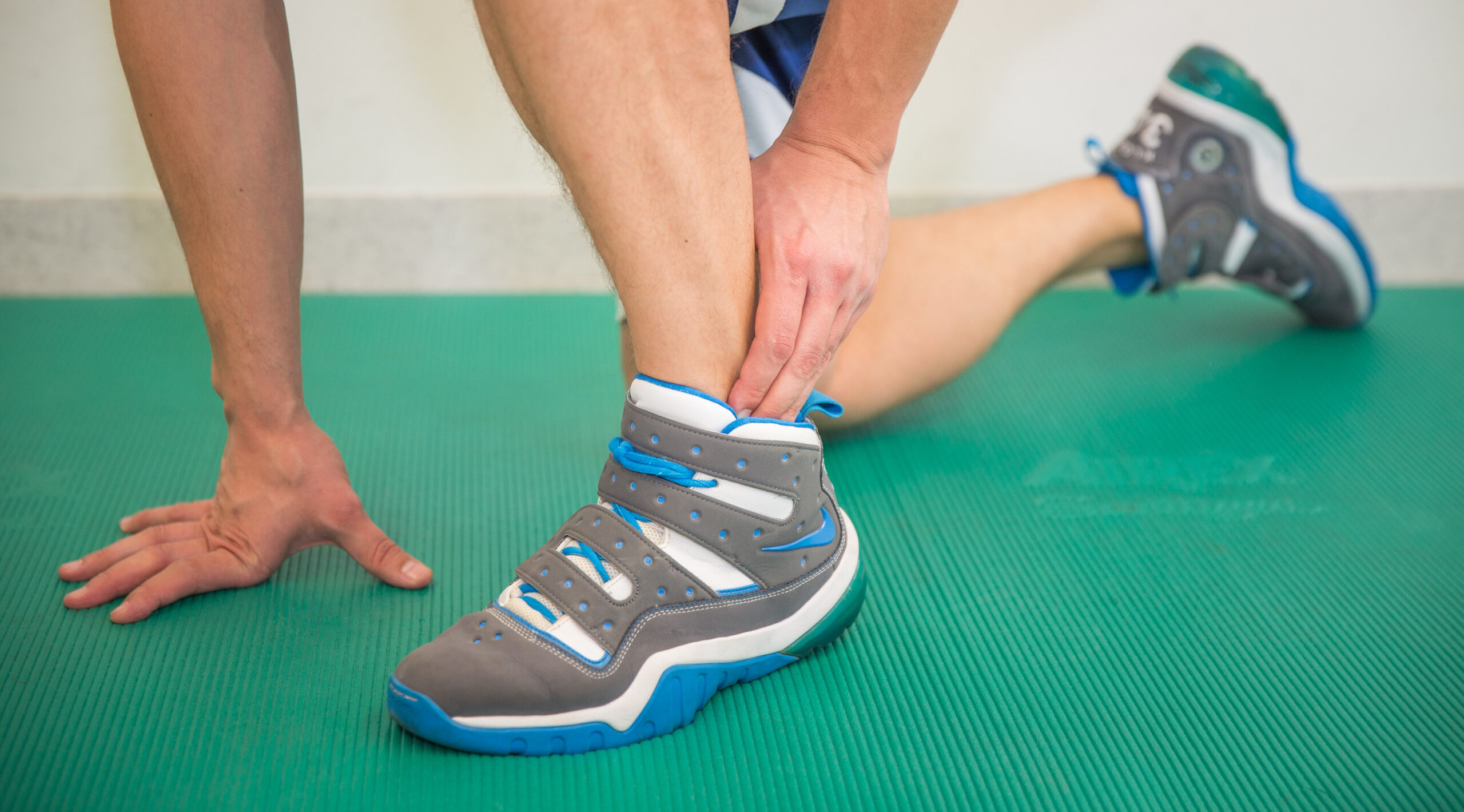
Ankle
Various types of sports injuries as well as wear and tear occur at the ankle. Injuries to the outer ligaments of the ankle joint are considered the most common ligament injuries in humans. For minor ligament injuries, conservative treatment is usually appropriate. More severe injuries are also only be treated acutely if other structures are involved, e.g. the syndesmosis ligament, cartilage or bone. Chronic instabilities can lead to degenerative damage to the ankle joint in the long term.
For the anatomical reconstruction of the external ligaments, the body’s own tendons, e.g. of the peroneus brevis muscle or the gracilis muscle (removal at the knee joint) are normally used. Injuries to the anterior syndesmosis can often be overlooked during initial treatment when the ankle joint has been sprained. The syndesmosis is considered the main stabilizer between the bones of the lower leg at the ankle. After an acute trauma, we stabilize the syndesmosis e.g. with a pulley system (tight-rope) with metal buttons. In chronic injuries this can additionally be reinforced with the body’s own tissue (e.g. periosteum strips or tendon tissue).
If the articular cartilage is damaged, cartilage therapy can be carried out, in techniques similar to those at the knee joint. In the case of a circumscribed cartilage defect, this can be replaced. For this purpose, cylinders of the body’s own cartilage and underlying bone (so-called OATS cylinders), which can be taken from non-weightbearing areas of the knee joint. Alternatively a synthetic bio-matrix of tricalcium phosphate and collagen (Cartilage Repair Device – CRD cylinders) are available. The damaged cartilage in the ankle joint is punched out and the replacement material is inserted into the defect zone in its place.
Furthermore, arthroscopic procedures, in which the defect is removed and treated with so-called bone marrow stimulating, are available. After a non-weightbearing period of approx. 6-8 weeks, replacement cartilage tissue can be created using the above mentioned techniques. The procedure to be used is decided for each patient individually. Where there is advanced widespread wear of the cartilage, joint-preserving surgery is generally no longer possible. If the patient suffers from permanent pain on weight bearing, pain at rest or at night, either an arthrodesis (fusion of the joint)or an ankle joint prosthesis can be considered.
As a response to long-term overuse or beginning degenerative wear, the body forms bony spurs around the joint (osteophytes). This is particularly typical for soccer players and is therefore also called soccer’s ankle when these spurs form at the front edge of the shin bone at the ankle. This often leads to painful restrictions in movement which can usually be solved by removing these arthroscopically.



 Contact for Patients
Contact for Patients Phone +49-(0)89 4140-7840 /-7830
Phone +49-(0)89 4140-7840 /-7830
